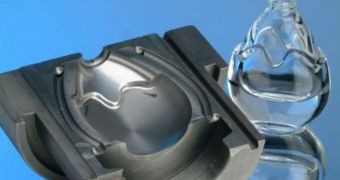While the global financial crisis wrecks havoc in workplace, forcing employers to fire many people, there are sectors that are still in desperate need of skilled workers. One such sector is that related to the production of polishing injection molds. These structures are extremely difficult to manufacture, and require the attention of highly skilled workers, who may spend as much as a whole week polishing just one metal mold. Now, German researchers have devised a method to assist in this labor-intensive work.
The only requirement that metal molds need to fulfill is that they need to be precisely according to the client's specifications. In other words, any flaw in it may render it useless for its designed application. Until now, technological limitations made it impossible for automated devices to be used in this process, but an innovation from the Fraunhofer Institute for Laser Technology ILT, in Aachen, Germany, may make this possible. The team essentially managed to devise a method that allows machines to enter complex curves, which was one of the main limitations.
“We do not polish the surface by hand with grinding and polishing media. Instead we use a laser. The laser beam melts the surface to a depth of about 50 to 100 micrometers. Surface tension ensures that the liquid metal flows evenly and solidifies smoothly,” ILT group leader Dr-Eng Edgar Willenborg says. The new method is similar to the standard technique, in that successive layers of polishing are applied. First, the lasers work by going 100 micrometers into the material. The next passes are more superficial, until the desired product is obtained.
“We can set the melting depth by means of various parameters: the laser output, the speed at which the laser beam travels along the surface and the length of the laser pulses,” the expert explains. The new method is not, however, able to replace hand polishers. Humans can obtain an accuracy of about 5 nanometers, whereas the new laser only manages 50 nanometers. “We will concentrate on automating the medium grades: a roughness of 50 nanometers is adequate for many applications, including the molds used for making standard plastic parts,” Willenborg adds.

 14 DAY TRIAL //
14 DAY TRIAL //